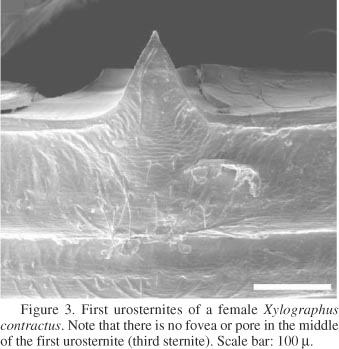Most male ciids present a fovea in the first urosternite. We tested two alternative hypotheses for the function of male abdominal fovea in Xylographus contractus Mellié: (i) the fovea secretes sexual pheromone, and (ii) the fovea secretes aggregation pheromone. For this, 59 specimens were submitted, separately, to two stimuli (fovea extracts and control) in an y-shaped glass olfactometer. For the analyses, we considered the 47 individuals that moved toward one of the longer olfactometer branches. The probability of moving toward the fovea extract was greater for females than for males (chi2 = 3.94, P = 0.047). The proportion of males that moved toward any of the olfactometer branches was the same (chi2 = 0.29, P = 0.59). We concluded that the male's abdominal fovea secretes a sexual pheromone and that there is no aggregation pheromone being secreted by this structure. We suggested that this sexual pheromone is used for short-range communication, acting in pre-copulatory courtship.
Mycetobiont beetle; copulatory courtship; tangoreceptor



